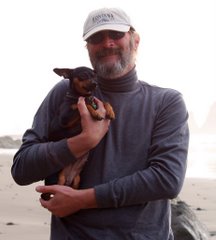Trumpeter Swans on the Flathead River
12/11/2014
Near Perma, Montana
She'd her apron wrapped around her
And he took her for a swan
But oh and alas
It was she, Polly Von.
To hear Peter, Paul and Mary sing this beautiful Irish ballad, click here.
We seem to have a large population of Trumpeter Swans in our area this fall. At least I'm assuming they are Trumpeter Swans, the largest bird native to North America. They are known to live in both Ninepipes and Pablo National Wildlife Refuges, both of which are close to us, just to the east of Sanders County in Lake County. They could be Tundra Swans, which are slightly smaller. All the guides I consulted said that it is hard to tell the two species apart. As a very amateur ornithologist, with at best an 800 mm lens set up on my camera, I was could not get a clear enough shot of the birds to be able to detect whether they have a red spot (Trumpeter) or a yellow spot (Tundra) on their bills--but apparently, even that distinction doesn't always apply. In any event, I set out yesterday to see what I could find, since I usually see the birds on the river when Kevin is driving and I have no chance of getting a decent shot of them. In my sightings, they range from the reservoir at Thompson Falls in the west almost to Dixon in the east, and are most commonly seen in the area around Seepay Creek, west of Perma. That's where I saw these birds yesterday, and I crossed a barbed wire fence, trespassing on someone's land, to get the picture shown above.
In actuality, I set off yesterday to do two things I dearly love, geocaching and photography. Last spring, I had the opportunity to use a Garmin Montana GPS unit, and while I found it somewhat frustrating--being handed an expensive and complicated tool with no instructions on how to use the thing--the more research I did, the more I felt that I had to add one of these to my own arsenal. Accordingly, when Kevin asked what I wanted for Christmas, I had no trouble coming up with a response. Kevin ordered one on-line and it was delivered Wednesday afternoon. I debated whether I should open the box, or wrap it and put it under the tree, but in the end, I followed my doctor's orders (I had asked my Facebook friends what I should do and my physician said "Go definitely," so I went.) Most of the rest of my friends who responded agreed that I should start using the thing immediately. After all, life is short and we have no promises for tomorrow. Right?
Pat's Knob as seen from MT Highway 28
12/11/2014
Near Plains, Montana
I got started geocaching back in 2006, while I was in California during the last year of my mother's life. I bought a Garmin eTrex Legend and thought it would be a good tool for measuring how far I was hiking through the redwoods each week. Turns out, the overstory in a redwood forest is generally so thick that the satellites can't penetrate the foliage, and the unit was useless for my purposes. It was, however, ideal for searching out geocaches. And if you don't know about geocaching, I recommend visiting geocaching.com to learn more about this passtime. The best description I've seen is "I use multi-million dollar US Government equipment to find Tupperware containers in the woods. What do you do for fun?" Geocaching got its start in the Portland, Oregon area, and has grown into a world wide hobby. At the time I started, there were over 1,500 caches hidden within a 100 mile radius of my California home, and as that home sits three miles from the Pacific Ocean, you have to figure that at least half that circle is under water. By comparison, there were only about a hundred or so caches within 100 miles of Missoula, Montana in 2006. To show how much the hobby has grown, there are now 6,178 caches within 100 miles of Plains, Montana. I don't want to do the math. You can see the exponential growth for yourself. Suffice it to say that there are plenty to keep me busy for the rest of my life, and that's without leaving home. Caches are hidden world-wide from Afghanistan (250) to Zimbabwe (188), and recently a cache was taken into space and placed in the Russian section of the International Space Station. I don't think I'll be finding that one any time soon.
The Flathead River at Koo-Koo-Sint Fishing Access
12/11/2014
Near Paradise, Montana
I enjoy combining geocaching with photography, and the camera around my neck is a good excuse for me to be out in the open, searching around for something hidden. Who knows, maybe I just lost my lens cap and that's why I'm down on the ground digging around the base of a tree. It's handy to have such an excuse because you really want to protect the cache from "muggles," as non-cachers are known--people who might move or even destroy a cache should they become aware of its existence.
Armed with my Christmas present, I set off yesterday morning in search of a couple of caches that had been eluding me. I figured it would be a good test to see just how much better the Montana 650t is over my old eTrex Legend. And oh my, I have to say I fell in love with the new toy, er tool. Workers at the Clark Fork Valley Hospital have placed four caches on the hospital grounds, and I had been unable to find two. (I hadn't even attempted the other two.) With my new unit in hand, I drove to the site of the first cache, and walked right to the cache. I can't explain why I was unable to find it before as it seemed very obvious this time. What I do know is that using my eTrex Legend, the coordinates appeared to be all over the place, and this time, with the Montana 650t, they stayed fixed in one location--the place where the cache was hidden.
Well now, if that was so easy, what about finding another cache that had successfully resisted my efforts. Montana Highway 28 runs 47 miles from Plains at the southwest end to Elmo at the northeast. There are 19 geocaches along that route--all but one right alongside the highway. I had previously found 16 of the caches, avoiding the one that was two miles off the highway and not attempting one where major construction was being done at the time. But one cache, appropriately called Spam, had stayed hidden even though I went back three times, and even took Kevin with me to try to find the darned thing. I used my eTrex Legend. I used the geocaching app on my iPhone. I knew I was in the right area, but again, the co-ordinates were all over the place. I could stand in one spot and be told that I was 4 feet from the cache, but if I circled around and came back to that same location, I would see that I was now 28 feet from the cache. Frustrating doesn't begin to describe the situation. Yesterday, with my Montana 650t, I found the cache--if not immediately, then pretty quickly. And in fact, the new GPS led me directly to the cache. It's my fault if I didn't see it right away.
The Perma Pictographs
12/11/2014
Near Perma, Montana
Driving back toward Plains, I stopped at the site where construction had stymied me last Spring, and quickly found the diabolically clever cache hidden there. I also took the first of yesterday's photos, the view of Pat's Knob shown above. Pat's Knob is the second highest peak in the Coeur d'Alene range of the Bitterroot Mountains, and I have written about it and my trips up the mountain several times in the past. John W. Patrick was one of the earliest white settlers in the Plains area, and the Plains Chamber of Commerce explains the mountain's name on their website.
After a quick lunch at Subway, I headed east on Montana 200 in an attempt to find more of the caches hidden in this area. The first place I stopped was at the Koo-koo-sint Fishing Access on the Flathead River. David Thompson is the most important person in the northwest you've never heard of. At least that's what I believe. Thompson is the man the British government sent out to beat Lewis and Clark and thus solidify Great Britain's claims to the Oregon Country. He didn't succeed, but in the attempt, he did more to map the Northwest than anyone else. His name lives on in Sanders County through the Thompson River, the Little Thompson River, the Thompson Lakes, and of course the Sanders County Seat, Thompson Falls. Because of his habit of going out at night, sextant in hand, the Salish people living in this area called him Koo-koo-sint, or Star Gazer. Two locations in Sanders County bear the Salish name, the other being a hiking trail between Plains and Thompson Falls. Thompson has become one of my heroes, and I heartily recommend that you learn everything you can about him.
Just east of the fishing access, Highway 200 enters the Flathead Indian Reservation. This is the only place you can cross into the Reservation without seeing a sign so stating. According to a friend and former Tribal Chair, James Steele Jr., the tribe got tired of constantly replacing the sign and no longer notes the change in jurisdiction. I picked up a couple more caches along Highway 200, one of which was at a beautiful spot on the north side of the river, west of Perma. This is a sacred site for the people of the Confederated Salish and Kootenai Tribes, and one should approach it with reverence. Unfortunately, that has not always been the response of visitors to the Perma Pictographs, and many of the scenes have been destroyed. I have to admit, that I was unable to see any writing on the rock walls, but the location itself is so beautiful and so peaceful, that I can see many returns in the future.
All told, I added seven new caches to my list of those found, bringing me to a lifetime total of 295 finds. My goal for 2014 is to pass 300. With only five to go, and with this great tool now at my disposal, I don't think that will be a problem.
Camas Creek entering the Flathead River
12/11/2014
Perma, Montana









1 comment:
Nice! And beautiful photos. I love the line: "The best description I've seen is 'I use multi-million dollar US Government equipment to find Tupperware containers in the woods. What do you do for fun?'" Good stuff!
Post a Comment